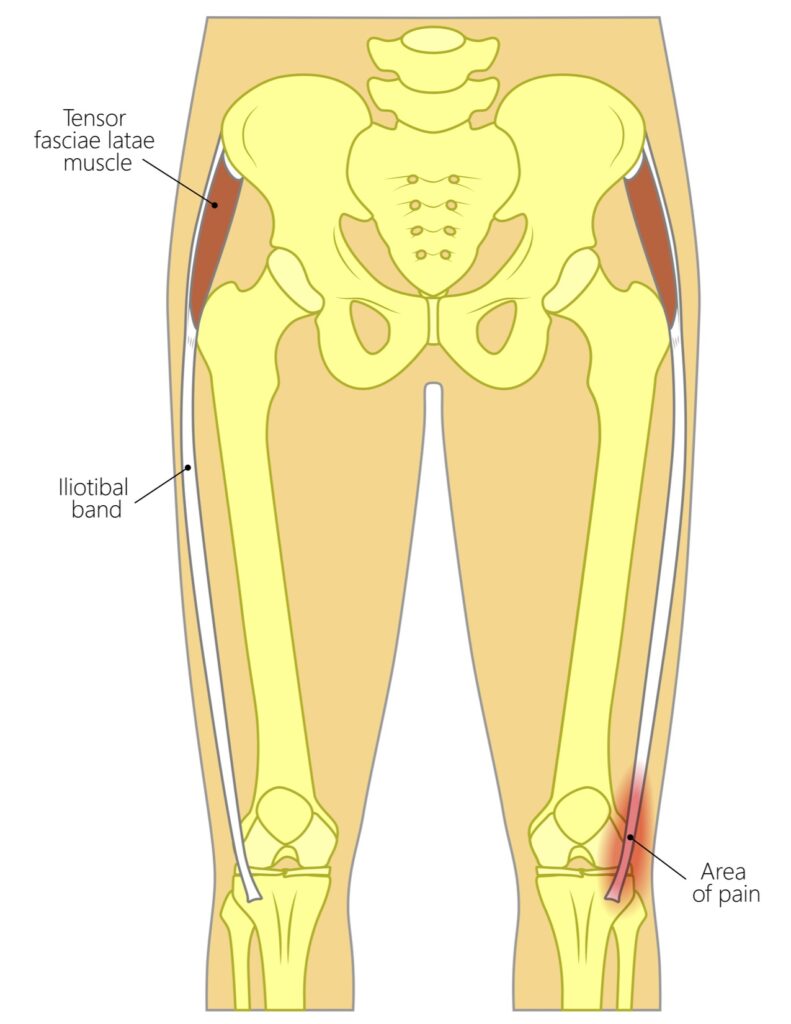Are you struggling with nagging lateral knee pain? Don’t know what warm up or cool down is appropriate for your running activities?
As you recently learned about faulty gait mechanics due to tibial torsion in the knee, another common cause of knee pain with physical activity is limited hip range of motion (ROM). It is vital that your pelvis, hip, knee and foot joints maintain full ROM when performing any sort of high-impact movements such as running. These joints are responsible for absorbing the ground reaction force (when your foot strikes the floor) and for propelling you forward into the next step. With limited ROM, caused by muscle stiffness and/or joint restriction, the body will develop compensation patterns that can later lead to joint degeneration, arthritis, etc.
Let’s analyze the hip and knee joints during a running gait. Movement impairments can present as:
- Cross-over sign; is spotted on the opposite side of the hip showing limited extension and affects the rotation in the pelvis during deceleration phase.
- Knee valgus; is a very common finding in runners and indicates weakness in the hip abductors (aka gluteus medius and gluteus minimus muscles).
- Excessive hip adduction; is generally caused by weakness in the hip adductors (aka groin muscles) which puts unnecessary strain on the iliotibial band.
These are only a few of many predictors for the commonly known diagnosis ITBand Syndrome. Symptoms associated with this diagnosis include pain and swelling in the hip, knee or leg that worsen with activities like running, lingering pain after exercises, tenderness around the front and outer aspect of the knee, etc.

What can you do about it?
Physical therapy to assess faulty movements in your lower body is the best way to go for getting rid of this nagging knee pain. With a thorough evaluation and gait analysis, your physical therapist will determine which structures are causing the pain and what can be done to correct these impairments. Following your evaluation, your therapist will perform a series of manual therapy techniques; such as massage, instrument-assisted soft tissue mobilization, assisted stretching, and you will receive a detailed exercise program catered to your needs and goals.
Call our office today for your personalized gait analysis!

Comments